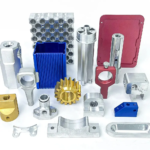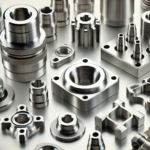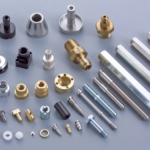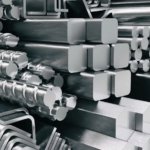You may be familiar with the strongest, most flexible, or most durable materials.3D printing plastic, but which material is best for your part or product for outdoor use? Is UV resistance the only thing you need to consider? Today, Mohou.com will discuss with you the knowledge related to outdoor plastic 3D printing.
Most no3D printed outdoor products such as furniture, garden equipment and toys are all made from polypropylene or polyethylene (PE) and are quickly replacing wood in applications such as amusement park rides , playground equipment and marine structures. Unfortunately, PE is not suitable for 3D printing due to its low melting point (much lower than PLA) and poor interlayer adhesion.
Whether a functional or decorative piece, choosing the right material can significantly improve resistance to environmental factors such as sun, heat, cold, chemicals and humidity. Let’s explore some of the best suitable for outdoor applications3D printed polymer materials and the properties that help them resist the elements.


needed outsideThere’s no shortage of 3D printed parts, like camera mounts, holiday light holders, and Tesla charger bases.
source:Printable via RealPrint_200387/Ondrej_Krames_139779/Gizmotoy)
But first, it helps to understand how external factors affect polymers.
UV rays are the most harmful environmental agent for plastics. Ultraviolet radiation from the sun breaks chemical bonds in polymers through a process called photodegradation, which not only causes changes in appearance, such as yellowing or whitish (“Charking”) will also reduce the physical properties. The second most damaging factor for plastic is humidity. We often think of plastics as waterproof, but different polymers actually absorb water at different rates, causing swelling that is imperceptible but equally detrimental to the strength and functionality of exterior components over time.
Heat and cold are also important factors to consider. Although most plastics do not melt even in the hottest outdoor environments, they can soften enough to cause mechanical failure, which is a problem for any functional part such as a bracket, buckle, or housing. Another thing to consider is if your parts will be exposed to chemicals, solvents, oils, etc. such as pool chemicals, bicycle grease or even large amounts of contaminants.
Because there is no onePolymer 3D printing materials have excellent resistance to UV, chemicals, heat and humidity. You must therefore choose a material with specific resistances adapted to your application.
Let’s take a look at the six main polymers used outdoors and their main properties.
Weather resistance of various polymers


used outside of land3D printed products, like these tent rows and garden shovels, need to be strong and resistant to moisture.
(Source: Printables by Ffirstgizmo/xSXHCx)
Below, we’ve featured some of the best outdoor-related pieces.Polymer 3D printing materials and the properties that put them on our list. The PLA UV at the bottom of our list is for comparison purposes only, as it is the least suitable for outdoors: it changes color when exposed to sunlight.
Keep in mind that not all filaments you purchase may have all of these specific properties, as manufacturers of individual filaments may use additives to change color or other qualities that may affect the properties of the material, including terms of biocompatibility and food safety, so be sure to read the technical data sheet for your material. Likewise, versions of the material with enhanced UV protection through additives can and often do also exist. You’ll find a variety of polymers that provide additional UV protection.


*Hygroscopic refers to the degree of hygroscopic behavior of a material, indicating the extent to which the material is prone to swelling. It lowers the glass transition temperature and the strength of the plastic. The most widely used standard for measuring water absorption of plastics is ASTM D570, which determines the percentage of water absorbed after 24 hours of immersion in water. In the table above we indicate the maximum percentage of water absorption by weight.
*Thermal resistance is measured by the “glass transition temperature” Tg, which is the point at which a polymer begins to transition from a rigid state to a more flexible state. This affects the structural integrity of the part. For flexible TPU and semi-flexible PP, the glass transition temperature is the point at which it changes from the desired flexible state to a fragile state, well below freezing.
1、PETG (polyethylene terephthalate)


PETG is an ideal material for a variety of 3D printed outdoor projects, including planters and outdoor lighting (Source: Filamentive/Mrmakerspace via Printables)
PETG is a popular choice for outdoor 3D printing due to its excellent strength, impact resistance, and weather resistance. It has good UV resistance, so it is not prone to yellowing or degradation when exposed to sunlight for a long time, but it is not as UV resistant as PC, another transparent material.
PETG has good chemical resistance and is suitable for outdoor environments where contact with the elements is frequent. However, as a thermoplastic polyester, unlike thermosets, it will warp at high temperatures. It should therefore be kept away from direct sunlight throughout the day to avoid deformation.
There are special versionsPETG has added UV resistance, like Eolas Prints’ UV Resistant PETG Filament, which has been modified to have greater UV resistance, promising color retention for at least five years. The tradeoff is that this version of PETG is not food safe. You can also increase the strength of UV resistant PETG by using another variation from companies like Nanovia, glass fiber reinforced PETG GF UV.
in conclusion
PETG is the material of choice for outdoor printing due to its combination of properties, affordability and wide availability in recyclable versions.
2、ASA (Acrylonitrile Styrene Acrylate)


This outdoor sink design should be made with durable, UV resistant material andPrinting on chemically etched materials, such as ASA (Source: Subsite_2448 via Printables)
ASA is specially designed to withstand harsh outdoor conditions, making it ideal for 3D printing outdoor products and parts without loss of mechanical properties or color. It features high UV resistance, ensuring long-term color stability and preventing deterioration from prolonged exposure to sunlight.
ASA also retains its mechanical properties over a wide temperature range, further enhancing its suitability for products used outdoors year-round, which can be freezing in winter and sweltering in summer. ASA exhibits good resistance to chemicals, oils and solvents, making it suitable for applications where exposure to a wide range of substances is expected.
Also consider offering higher mechanical propertiesASA blends such as ASA/PC and ASA/PVC.
in conclusion:
AlthoughASA is designed for outdoor use and has strong mechanical properties, but the only reason it’s not our first choice is that ASA emits potentially harmful fumes when printing and requires temperature nozzle temperature of around 230°C for a 3D printer.However, if you start withprinting mohou.comComponent,ASA will be our best choice for all types of exterior parts.
3、PA (polyamide) 11


Nylon PA 11 is known for its strength, toughness and flexibility, making it a versatile material for outdoor applications. It has excellent impact resistance and can withstand bending and bending without cracking or breaking, making it suitable for functional parts supporting different loads. Nylon has good chemical resistance and can withstand exposure to moisture without significant degradation.
There are many variations of PA, including PA6 and PA12, as well as carbon fiber PA, glass fiber PA, and Kevlar fiber PA. We focus on PA11 here because it generally has the best UV resistance and is derived from renewable plant sources (usually castor beans), making it a bio-based polymer. In contrast, PA 12 is generally produced from petrochemicals.


toyota race3D printed nylon carbon fiber hood scoop on GR86 cup (Source: Stratasys)
PA11 is typically used in outdoor applications requiring prolonged exposure to sunlight, such as automotive parts, outdoor equipment and construction equipment. It is also known for its resistance to many common chemicals, including oils, greases, fuels, solvents and alkaline solutions.
If you are looking for one designed for outdoor useProperties of PA11, look for UV stabilized polyamide 11 containing additives.
in conclusion:
If your main concern is the strength and durability of your exterior components, nothing beatsThe PA11 is better, especially the carbon fiber or fiberglass reinforced version. This material is the material of choice for our outdoor sporting goods and parts with features such as latches. It is also ideal for parts that may come into contact with chemicals, such as engine exhaust.
4、PC (polycarbonate)


Polycarbonate is a popular material for drone parts (source:Raise3D)
For applications requiring the highest UV resistance, polycarbonate is generallyThe first choice among 3D printing materials, generally better than PETG, but generally more expensive. It is particularly suitable for outdoor applications where exposure to sunlight is an important factor. Widely used in outdoor lighting fixtures
PC is widely used in 3D printing due to its excellent mechanical properties (such as high impact resistance, strength and toughness) as well as good heat resistance and dimensional stability. It is a renowned alternative to glass because it is transparent, 250 times more impact resistant than glass and can be drilled without any breakage problems.
certainly,PC is not only clear. It can take on color and remain translucent or completely opaque. It is also mixed with other plastics to improve impact resistance. For example, PC-ABS comes in black and white and is used in products that require greater strength than ABS alone, such as drone airframes and aftermarket parts. You will also find PC with additives like carbon fiber.
Despite their inherent UV resistance, someThe PC material has additional UV stabilizers added to the formula to further improve its outdoor durability.
in conclusion:
For robust, UV-resistant exterior parts, especially those that need to be transparent or translucent,PC is a good choice. This material is our first choice for outdoor lighting. It is also ideal for drones and their parts that are exposed to outdoor UV rays and need to maintain their rigidity even at high temperatures.
5、TPU (thermoplastic polyurethane)


The traction wheel isCommon applications of TPU 3D printing (Source: Printables by ShakeAndBake)
If your exterior parts need to be flexible, like pipe fittings or wheels, thenTPU is your best choice, partly because there aren’t many alternatives to 3D printing. TPE (thermoplastic elastomer) has higher chemical resistance and TPC (thermoplastic copolyester) has better heat resistance than TPU, but depending on your application, these small improvements may not be enough to justify the extra cost.
TPU is generally weather resistant, but may not perform well in extreme temperature conditions, especially high temperatures. Its melting point is relatively low compared to some other materials, which can cause 3D printed parts to warp in high temperature environments. Don’t give up on TPU just yet. It is a highly customized polymer that filament manufacturers have tailored to all types of specific applications. For example, BASF Forward AM offers Ultrafuse TPU 85A, formulated to provide high abrasion and abrasion resistance, very good low temperature flexibility and high resistance to oils, greases, oxygen and ‘ozone.
in conclusion:
Although many brandsTPU degrades outdoors over time due to the effects of UV rays and water absorption, but there are still varieties formulated to withstand the outdoors.
6、PP (polypropylene)


3D printed outdoor sprinklers are ideal for polypropylene printing (Source: Falcone20cne via Go-3Dprint)
polypropylene(PP) is a versatile thermoplastic polymer that is widely used for its physical strength and excellent chemical resistance, but when it comes to outdoor use, it is famous for its low moisture absorption and high waterproofing sexual. This makes PP ideal for outdoor projects that need to be strong and waterproof, such as sprinkler systems. PP is often used in garden furniture in traditional manufacturing (such as injection molding) because it exhibits strength and flexibility during the hot summer months, but becomes brittle during the cold summer months. winter.
The disadvantage of PP is that it is not as good as other polymers in terms of UV resistance. Unless your polypropylene filament contains UV blocking additives, prolonged exposure to UV rays can cause degradation.
One of the key properties of PP is its excellent strength-to-weight ratio, making it the material of choice for lightweight, durable products such as pipes, water tanks and fittings due to its resistance to corrosion and its durability in a variety of domestic and industrial applications. applications. PP is often used in garden furniture in traditional manufacturing (such as injection molding) because it exhibits strength and flexibility during the hot summer months, but becomes brittle during the cold summer months. winter.
in conclusion:
for waterFor 3D printing projects such as pipe connectors, air conditioning vents and fountain projects, nothing is better than PP. Yes, PVC is commonly used for pipes and you can 3D print with it, but its high toxicity and dangers during the 3D printing process make us recommend PP.
7、UV PLA fading


iSanmate Color Changing PLA UV Filament changes color on the outside (Source: iSanmate)
Currently, many manufacturers offerPLA UV color changing filaments, they have characteristics common to PLA and are not suitable for long term outdoor use, but one of its unique characteristics is the ability to change color when exposed to light ultraviolet, such as outdoor sunlight.
Instead of being UV resistant, these filaments absorb sunlight, triggering a color change. once removed from the light,3D printed parts will return to their original color. Which color turns into which sun-activated color is not universal among filament manufacturers, so check the label. Materials maker R3D, for example, offers striking white-to-blue filaments and more subtle yellow-to-green filaments.
If you want to know why this is commonPLA does not appear on our list of materials suitable for exterior use, mainly due to its poor heat resistance. PLA is subject to warping and sagging at around 40°C. If you want to use PLA outdoors, look for a specially formulated high temperature PLA.
in conclusion:
For a pleasure aimed at enjoying the sunIt is a perfect choice for 3D printing projects such as children’s beach toys. Because it might only last a few seasons.
Daguang focuses on providing solutions such as precision CNC machining services (3-axis, 4-axis, 5-axis machining), CNC milling, 3D printing and rapid prototyping services.










